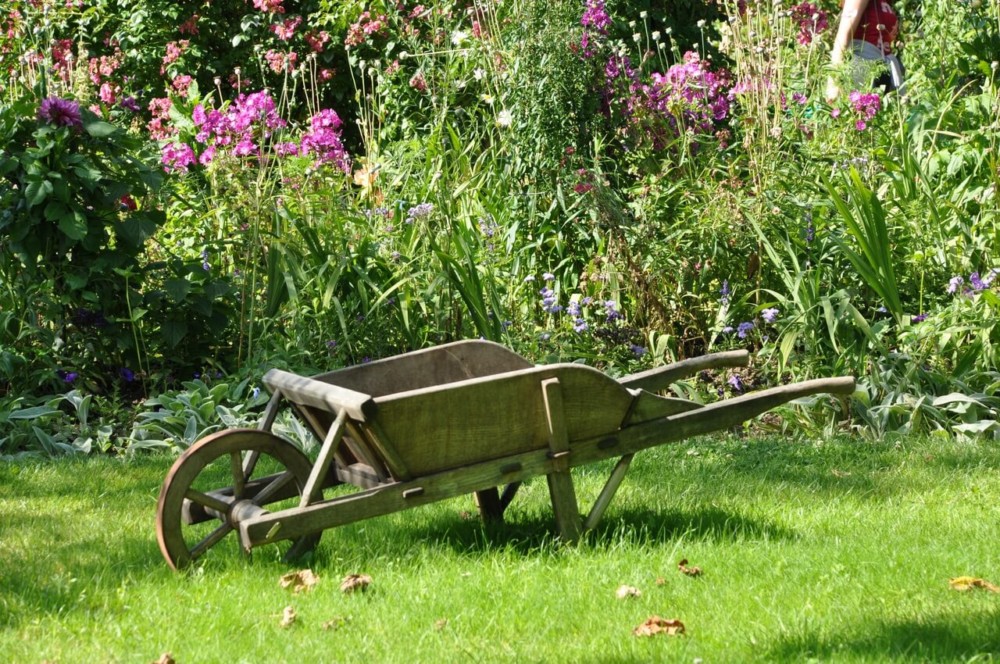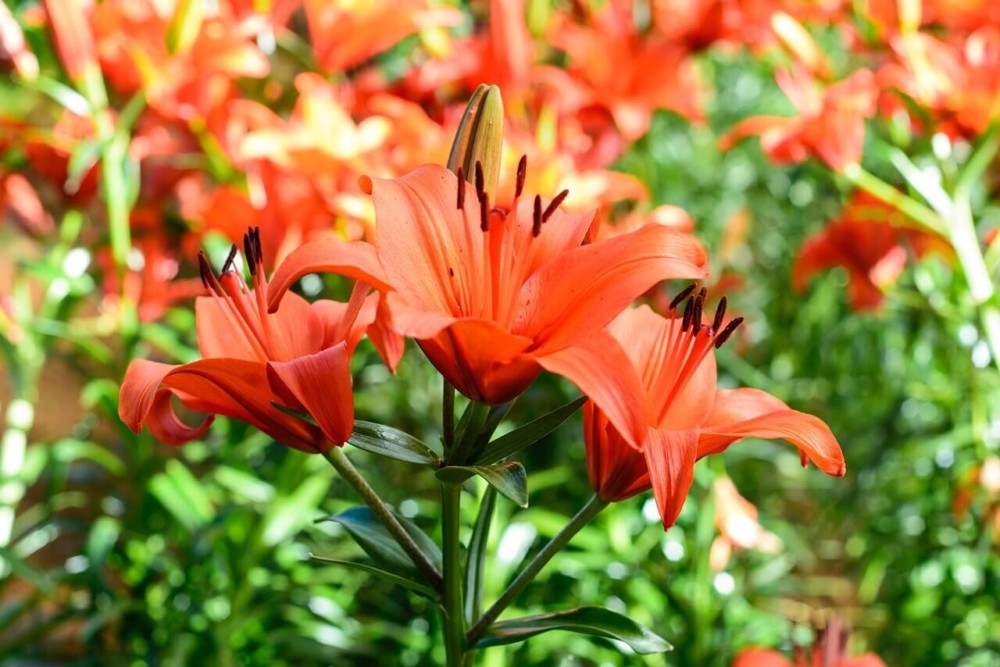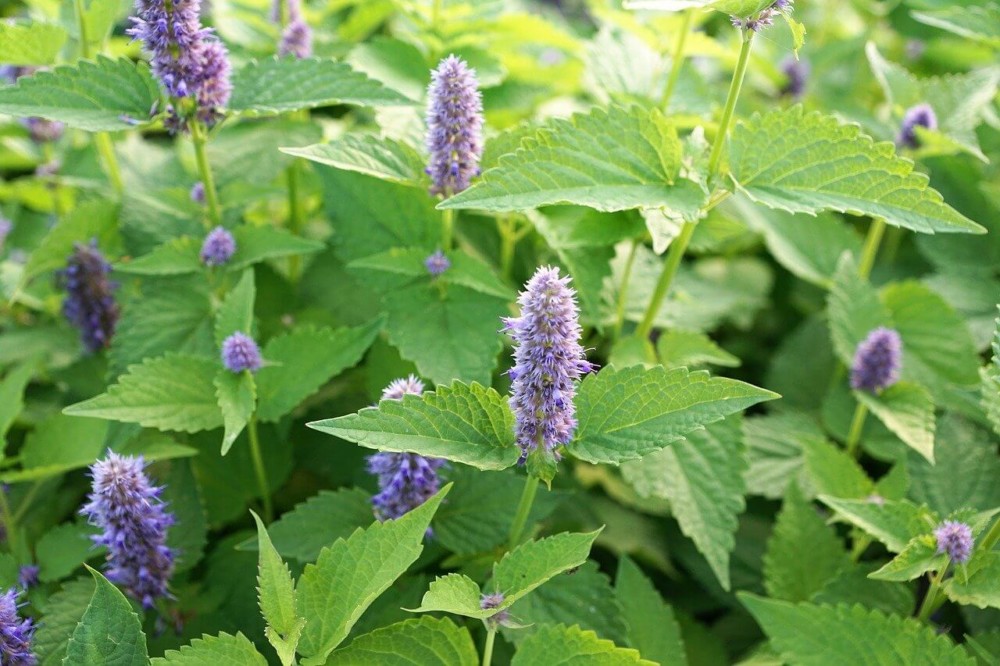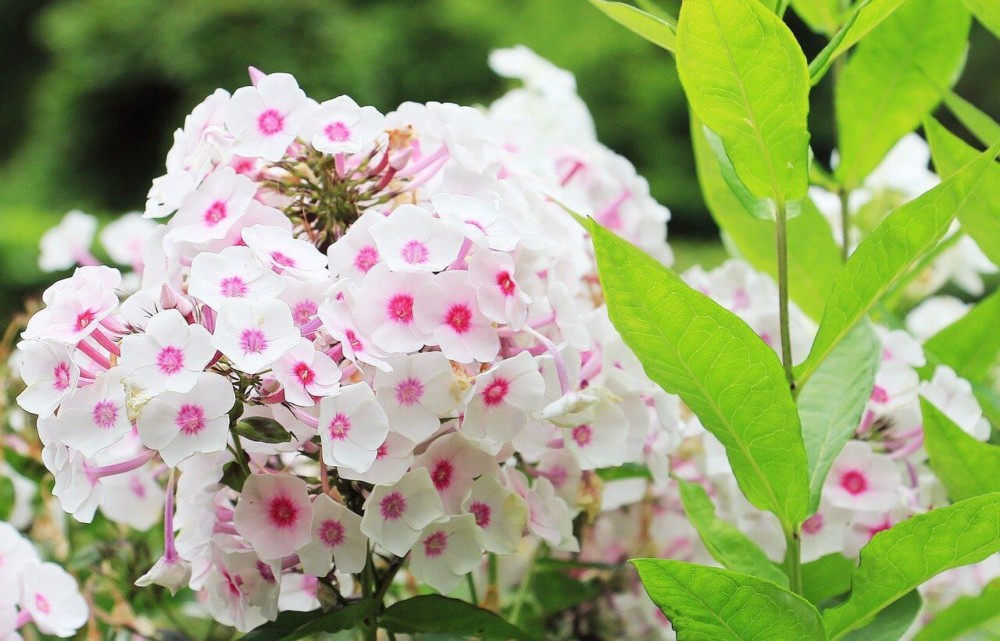Spring can be a nightmare for allergy sufferers. The pollen in the air makes life difficult. But, eliminating flowers and pollen-heavy plants doesn’t have to be the only option. You can grow a beautiful garden with flowers that are bee-friendly and allergy-friendly.
Did you know?
Many of the flowers that cause allergies are not the same flowers that help bees and other pollinators! Plants that emit high levels of pollen are not usually the same plants that attract bees and other insect pollinators. Those allergy-causing flowers rely on the wind to pollinate instead of bees.
Bee and hummingbird-friendly flowers are often the kind of flowers that keep their pollen deep inside the flower and rely on bees to pollinate them. Because the pollen is deep inside the flower, it doesn’t carry on the wind and annoy those with allergies.
Why are bees important? Bees are important because they are responsible for pollinating over 30% of the food supply in the world. Without bees, much of the foods we enjoy would not grow or be available. But bees are in danger. Bee colonies are collapsing and dying at alarming rates.
It is important and easy to cultivate plants that are friendly to bees and that helps to preserve local bee colonies.
It’s easy to help bees out and stay allergy-free in the spring!
How to plant an allergy-free bee flower garden
- Grass is an Enemy to Allergies and Bees Alike
- Choose Showy Tubal Flowers
- Plant Blooms Away From Windows and Doorways
- Try These 27 Flowers Instead
If you are looking for other tips on how to attract bees, check out this article on how to be friendly to bees.
1. Grass is an Enemy to Allergies and Bees Alike
Many varieties of grass are an enemy of allergy sufferers. Grass relies wholly on the wind to pollinate and spread. As a result, the pollen saturates the air and causes allergic reactions.
Commonly called Hay Fever, grass-induced allergies can last through multiple seasons because grass is one of the first plants to turn green in the spring and goes until temperatures are consistently below freezing.
But that’s not all,
Grass is also an enemy to bees. Lawns have taken over natural spaces and plants that provide bees with food and shelter. This has left bees struggling to find places to nest, hide, and eat.
As an allergy sufferer, keeping your grasses from going to seed will help reduce the amount of pollen in the air. If you suffer hay fever even while your lawn is kept mowed, consider converting part or all of it to other landscape options that will be friendlier to both yourself and the natural creatures in your area.
A growing movement across the United States has homeowners turning lawns into gardens and wild spaces. This change is much better for the environment and provides a great level of self-sufficiency to homeowners.
Even small spaces of wildness provide a great service to bees and other pollinating insects. It provides nesting materials for local birds and revitalizes the soil against the depleting effects of grass on the soil.
And, it will make a giant difference in relief to those with allergies.
2. Choose Showy, Tubal Flowers
Many of the worst offending flowers to allergies are flowers that release their pollen into the wind. The pollen from these plants floats on the wind, sticks to clothing, and floats into buildings.
Conversely,
Flowers that rely on bees don’t release much or any of their pollen into the air. Instead, the flowers rely on bees to pollinate them and hold their pollen inside the flower.
Tubal flowers rely on insects to crawl deep inside the flower to gather the nectar and pollen. Bees are ideal for the task with their fuzzy bodies. As they fly from flower to flower collecting nectar and pollen, they spread the pollen.

Allergen-free flowers must attract bees to get pollinated. As a result, many of these flowers are colorful, showy, and beautiful. Some of the most exotic and lovely flowers are the same ones that don’t spew pollen into the air but are showy to bring bees to them.
Yet,
Many of the most popular flowers for gardens involve flowers that self-pollinate and induce allergic reactions.
Worst Flowers For Allergies
Watch out for these common offenders in your garden. They are popular because they have rich fragrances and often bloom for longer periods.
As a general, rule flowers in the sunflower, aster, and daisy family are high offenders. Asters don’t rely on the wind to pollinate, but they do have very high levels of pollen. These flowers have large circular heads and the center is made up of hundreds of smaller flowers that all release pollen.
Let’s take a look at many popular flowers in this flower family.
Similarly, chamomile, a member of the daisy family, is often an offender to allergies. It can irritate even when dried and used in tea. Dahlia flowers are loved because of their great color variety, but release a lot of pollen.
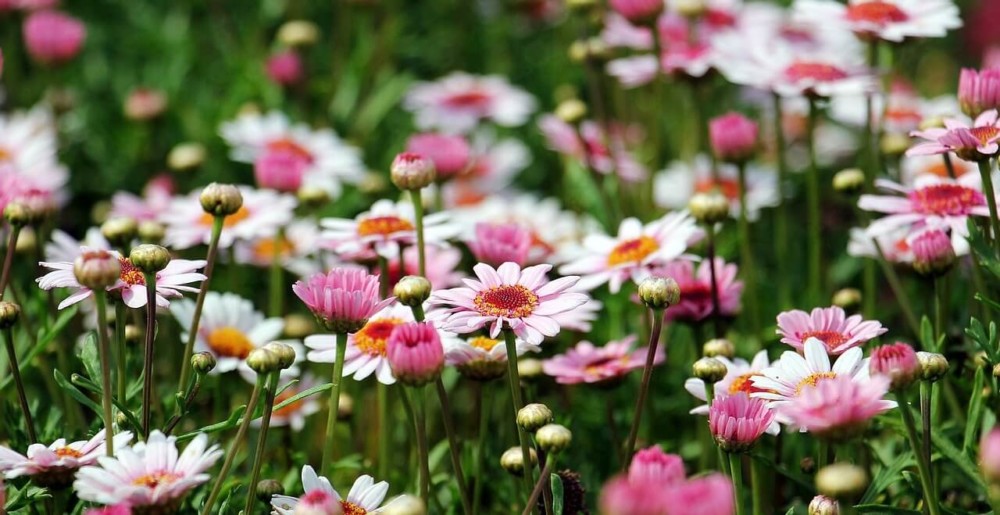
Chrysanthemums produce many flowers in a small space. That’s one feature that makes them ideal for potted plants, but can make allergies flare up from the high levels of pollen. Likewise, the centers of sunflowers produce much pollen that can offset your enjoyment of their bright colors.
Baby’s breath is loved as a filler plant. The tiny flowers are delicate and add a touch of elegance, but also pack a powerful punch in pollen.
Avoid flowers in the Asteraceae or Compositae family.
- Daisies
- Sunflowers
- Baby’s breath
- Chamomile
- Chrysanthemums
- Sunflowers
- Asters
But don’t worry, many other flowers aren’t as irritating that you will be able to enjoy symptom-free!
3. Plant Blooms Away From Windows and Doorways
If you adore certain flowers that cause allergies, then make sure that you plant them farther from walkways, doors, and windows. This creates a distance barrier that will help to keep pollen from inside your house and from snagging on your clothes.
But, it will allow you to enjoy the offenders from a distance.
If you have severe allergies, then you may need to plant everything away from entrances. But, for most people, simply replacing high allergen plants with lower-allergen ones will solve the problem and allow your windows and doors to look beautiful without the allergies.
4. Try These 27 Flowers Instead
The orchid and lily families of flowers are great flowers for those with allergies. These large, bright, showy flowers rely on bees to pollinate them and are colorful and big. The pollen they produce is heavy and doesn’t float on the wind well.
Instead, try these 27 bee-friendly flowers.
Basil
Not only is basil a beloved herb used in countless dishes, but it’s a favorite of bees and it doesn’t aggravate allergies. Basil will provide a wonderful aroma to your outdoor garden and a bountiful touch to your cooking.
It blooms later in the summer so letting it bolt will provide bees with a late summer feast that will help them to store food for the winter.

Cactus Flowers
Unless you live in the south, you may not realize that cactuses have lovely blooms. In the desert, these short-lived blooms have little pollen and rarely cause any reaction from allergies. At the same time, the flowers are vital for local insects and bees and make a big difference in the harsh desert environment.
Clematis
The majority of clematis varieties don’t bother those with allergies. Two varieties are the exception and you will want to avoid them. The North American Native Virgin’s Bower and Sweet Autumn Virgin’s Bower are often irritants for allergies.
Otherwise, enjoy clematis for their lovely and vibrant look.

Columbine
Columbine relies not on the wind, but on hummingbirds and bees to reach deep into the stamens of the flower for nectar. Pollen brushes against these small animals and is carried to other flowers for pollination.
This makes columbine a great flower for allergies.
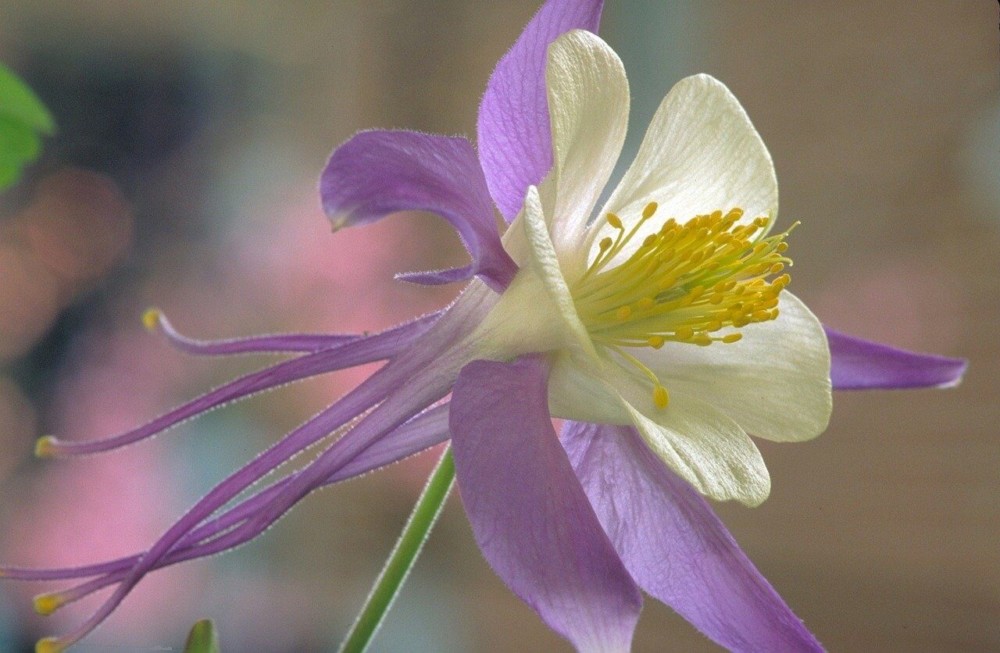
Cranesbill
Cranesbill is part of the geranium family and requires little effort or time, but provides bursts of flowers that last long. Their foliage also provides vibrant green all summer long. Cranesbill is one flower that’s heavily recommended for the allergy-free garden.
Yet, cranesbill is loved by honeybees and many other varieties of bees. It provides important resources for local birds as well.
Crocus
Many varieties of crocus will bloom in the fall, winter, and spring. The crocus flower is a perennial that requires pollinators to reproduce. They don’t let pollen into the air, but their delicate flowers are one of the earliest and last to bloom.
As a result, they are a vital food source for bees and other insects who need their pollen and nectar to store food for the winter when other sources are harder to find.

Daffodils
Although many bulb flowers are friendly to allergy sufferers, daffodils are also a beloved source of food for bees. Some people are allergic to bulbs and should handle and plant them with gloves on to prevent a reaction.
Daffodils have less pollen than other bee-friendly flowers, but are more easily accessed than some of the other spring varieties and so will still be helpful to bees. The pollen stays inside the trumpet part of the flower, making them safe for allergies. Plus, they are often one of the earliest spring bloomers.

Foxglove
The tubular flowers of foxglove keep pollen inside and protect you from allergy reactions, but are a favorite of bees and other insects. Most varieties are native to specific areas of the globe so try to choose varieties native to your area to help the local bee population. Hummingbirds also love this delicate flower.
Foxglove is poisonous to pets and children so if you choose to cultivate it indoors or outdoors, make sure that it’s in an area where pets and small kids can’t reach it to eat.
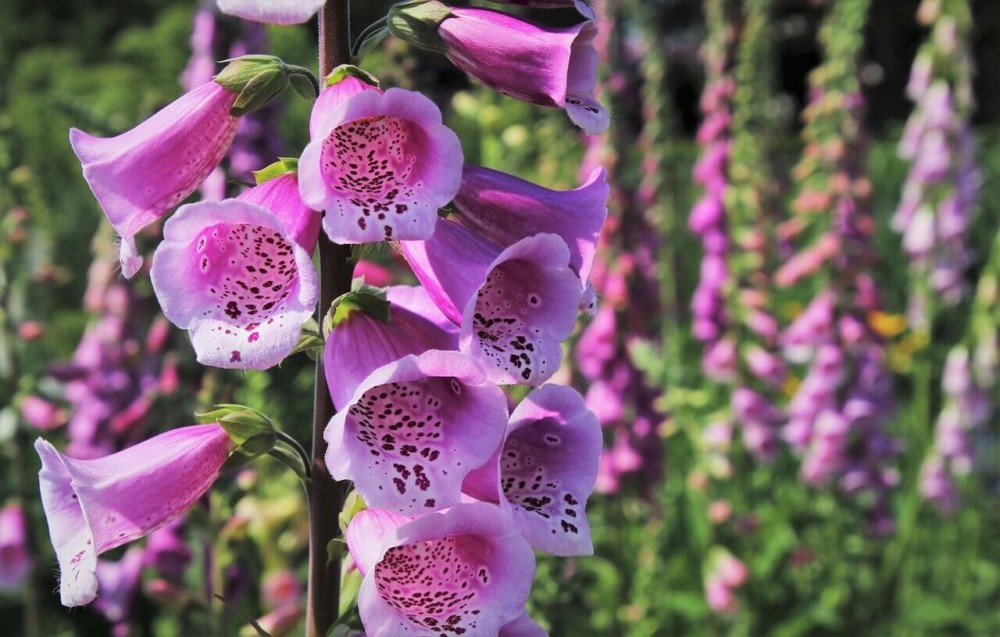
Geraniums
Geraniums produce little pollen but have many, large, bright flowers that attract bees. This makes them ideal for both the bee lover and friendly to allergies. Some people report a minor reaction to the leaves so if you have extreme allergies, stay away from brushing against them.
Otherwise, you will enjoy these beautiful flowers sneeze-free! They are even ideal for potted flowers inside.
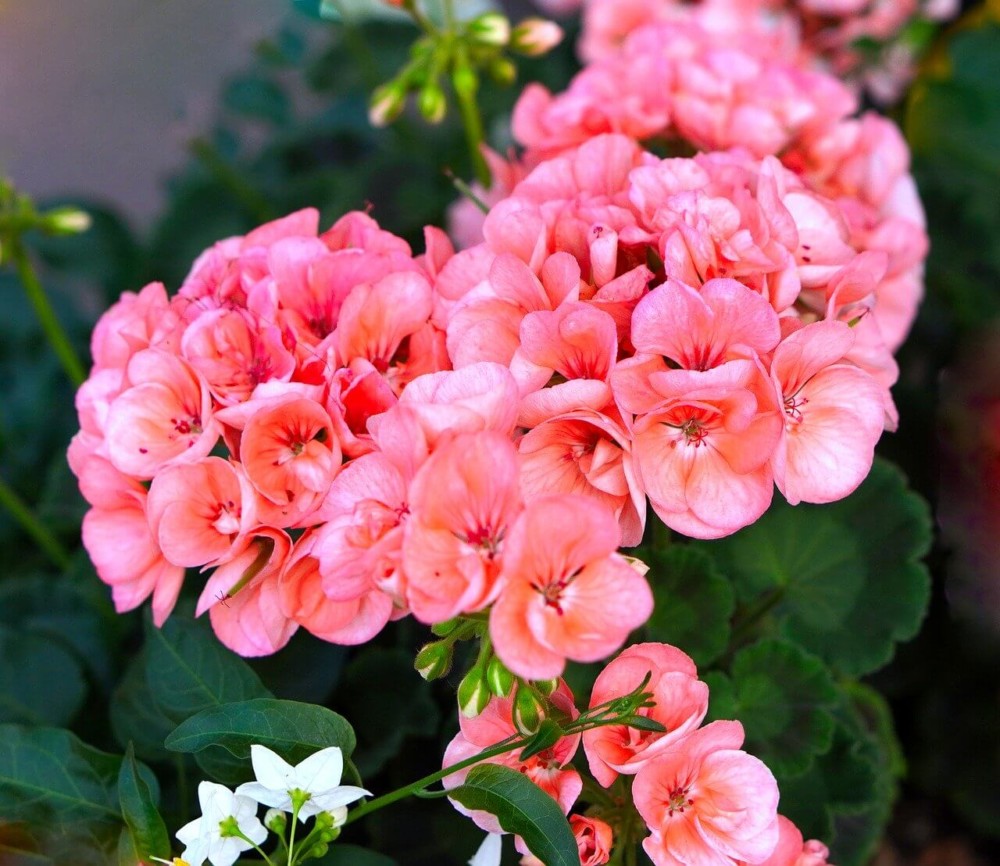
Goldenrod
Goldenrod is a great substitute for ragweed. It looks very similar, but unlike ragweed, it doesn’t rely on the wind to carry the pollen. This makes it innocent of hayfever and a perfect replacement.
Many people classify goldenrod and ragweed together because they look similar, but the effects on allergies are drastically different. Goldenrod relies on bees and birds to carry the pollen and will not cause reactions to the heavy pollen that doesn’t float on the wind.

Hibiscus
The pollen produced by hibiscus is very heavy and won’t float on the wind. Hibiscuses rely on bees and birds to pollinate and will help local insect species.
Flowers often only bloom for a day, but the plant will continue its bloom for a while. The many varieties include plants that reach 10-15 feet high and smaller dwarf varieties.
Although this is a very allergy-friendly flower, you shouldn’t drink hibiscus tea as the tea can contain the pollen and might trigger an allergic reaction.
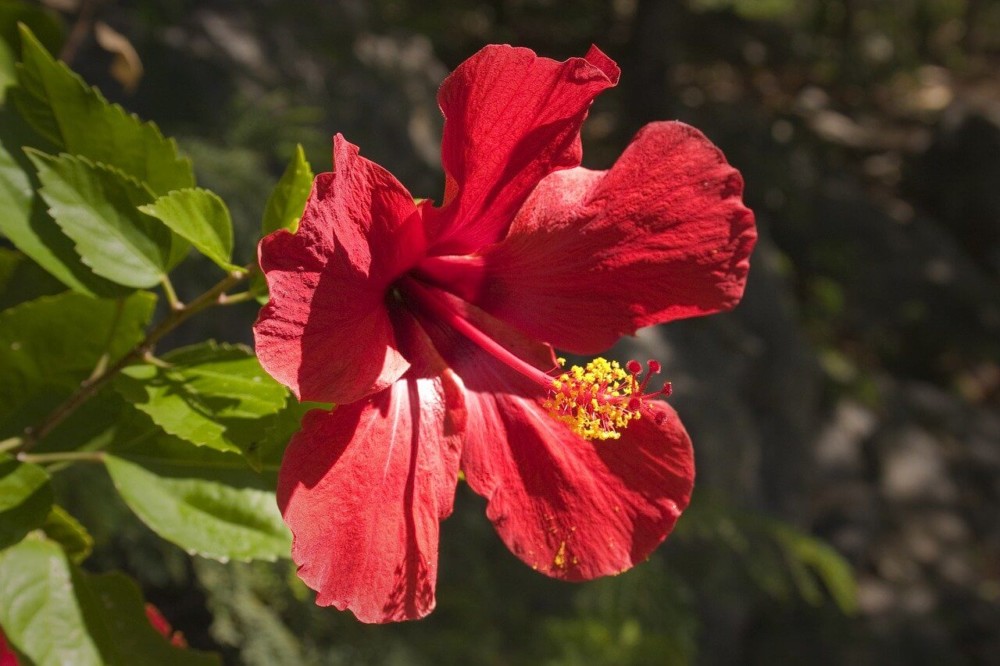
Hyacinth
The unique shape of the hyacinth traps the pollen and keeps it from causing annoying sneezing, sniffles, or runny nose. But, if digested or handled, the pollen can cause allergic reactions through touch so these flowers are best planted in the garden and not kept in pots inside.
Hyacinths unique long flowers are ideal for bees to crawl inside for pollen and the blues and purples will attract bees to your garden.
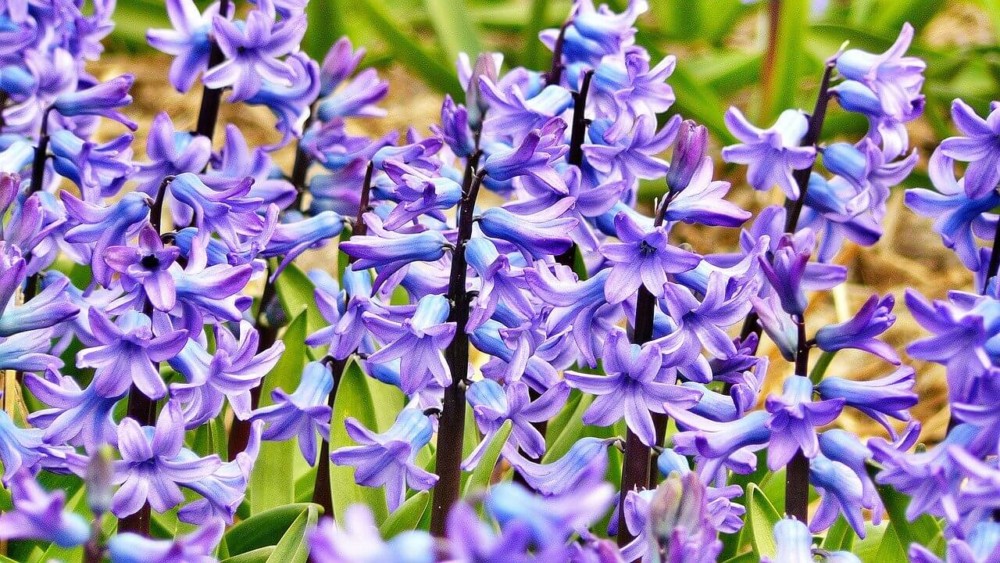
Iris
An iris flower hides its pollen within its sloping petals. The iris and bumblebee have evolved to be mutually beneficial. Irises are important flowers for your local bumblebee population, but won’t release pollen to irritate noses or cause sniffling.
At the same time, the large variety of colors and exotic looking flowers will delight you. Irises are perennials and will come back every year, requiring little time to keep them beautiful.
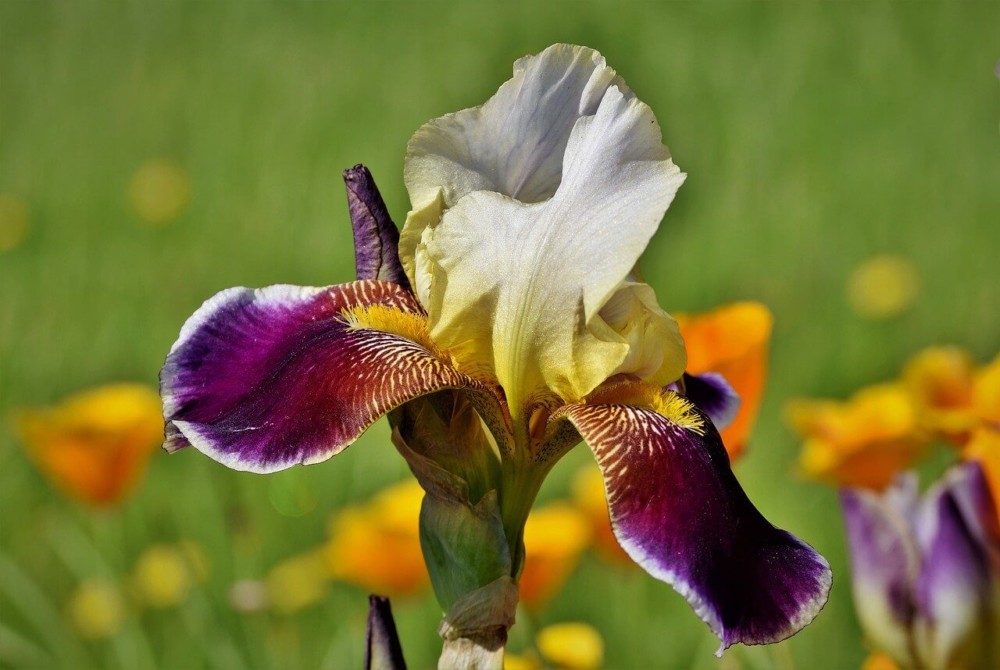
Lavender
Lavender produces lovely purple flowers and is a great replacement for chamomile. Although the flowers don’t look the same, they are lovely and lavender tea is enjoyed by many. It’s also useful in the kitchen as an herb.
Like chamomile, lavender helps to enhance sleep, but without the same allergy reactions. Lavender is a perennial and once it’s established, very hardy.
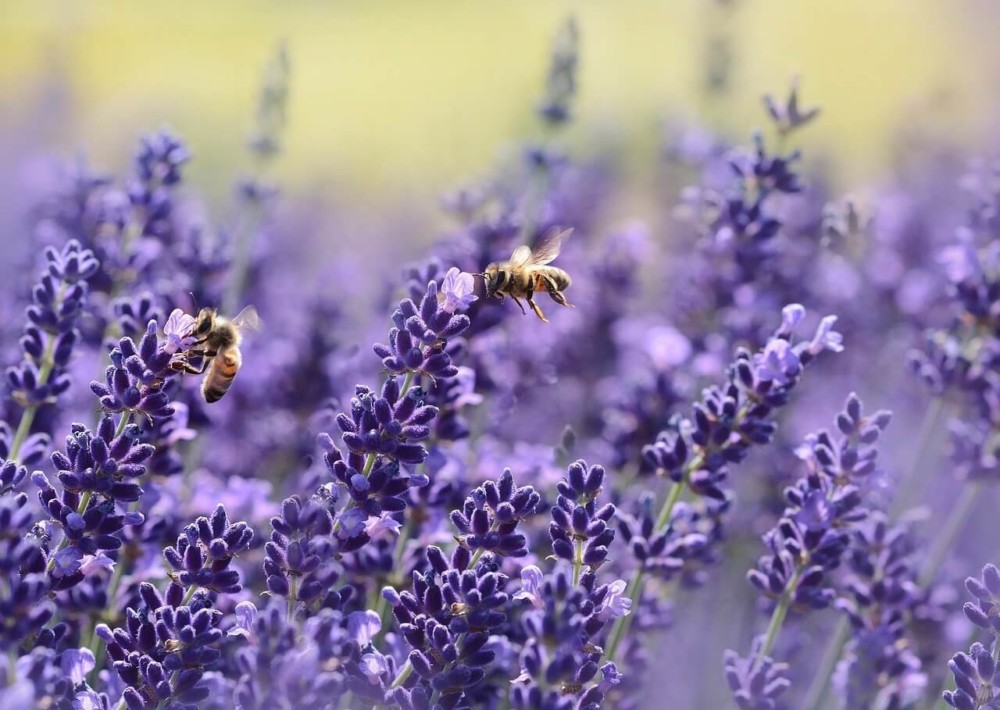
Lilies
Lilies are large beautiful and colorful flowers that don’t release pollen into the wind. Many lily varieties are perennials and will come back each year. They come in a variety of colors and because they won’t irritate allergies and take little upkeep, they are ideal for a flower garden.
Yet bees love lilies and will appreciate the food source.
Mint
As a popular herb, mint is very friendly for allergies and doesn’t contribute to hayfever. If you grow mint, plant it in a contained area such as a container or area with borders. Mint is very prolific and will continue to spread each year if it’s not contained.
But, the fragrant leaves add great flavor to foods and the small flowers attract bees. Mint requires little to no care and is very hardy.
Orchids
Orchids grow in warmer climates and its pollen does not initiate allergic reactions. Yet, orchids are vital to orchid bees, a struggling bee that’s endangered. Even those who live in colder climates can enjoy orchids inside without struggling with reactions to its pollen.
Any flower in the orchid family will be friendly to allergies.
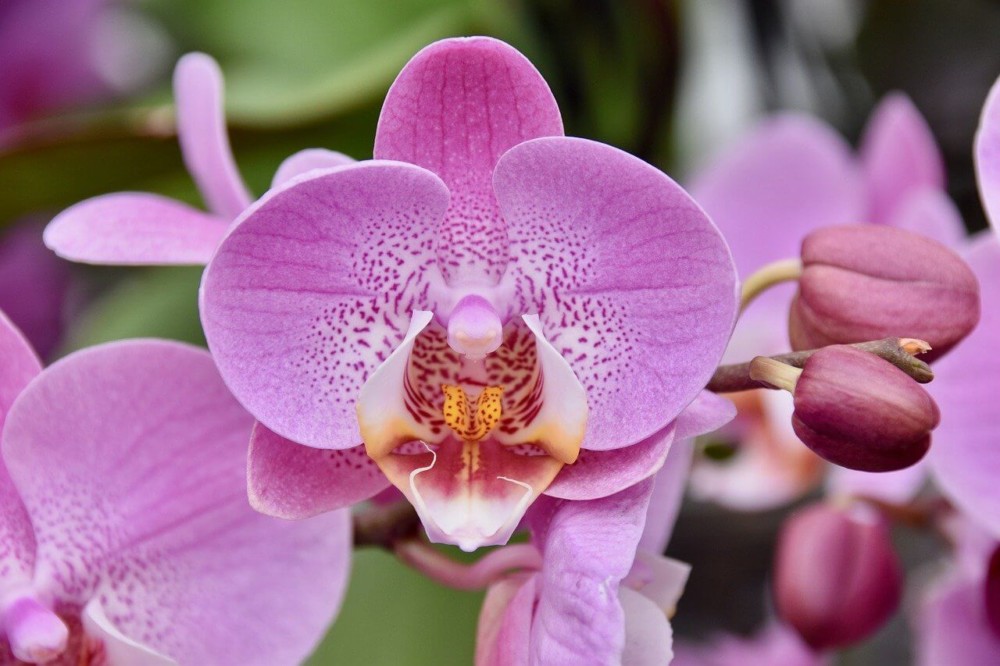
Pansies
The heavy pollen that plants produce is perfect for allergies because it doesn’t float on the wind or cause reactions. Pansies are innocent of causing hayfever. Yet pansies produce early, vibrant blooms that announce spring has arrived.
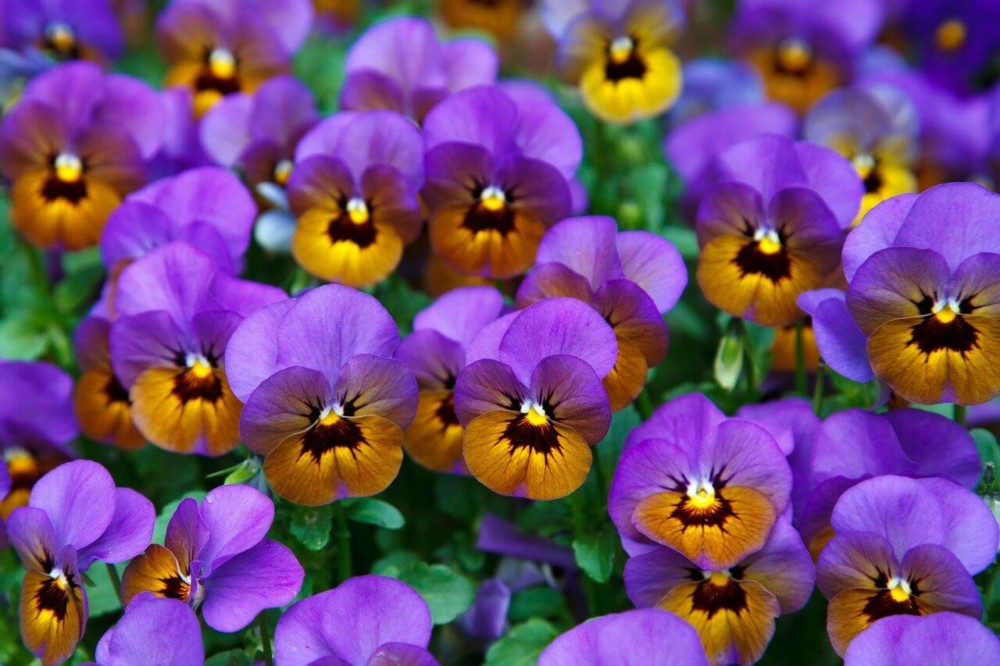
Peony
Peonies offer full blooms, but the shape of their flowers trap pollen inside, making them a loved flower of allergy lovers. Plus their rich green foliage makes them perfect for bouquets and indoor plants.
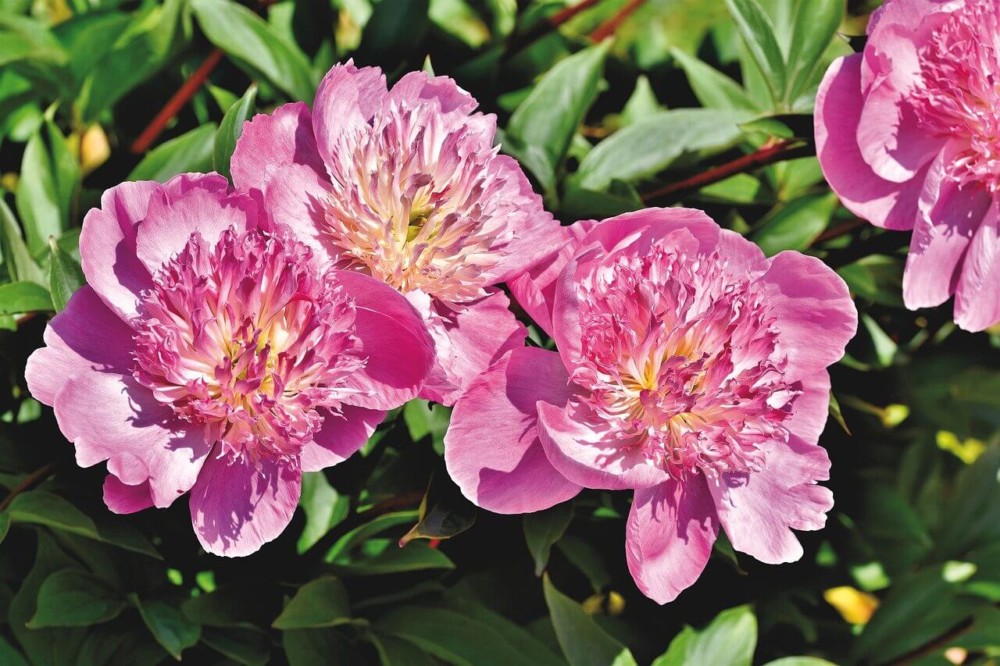
Phlox
Phlox flowers are a great alternative to mums and daisies, which cause many reactions and are a major contributor to allergies. Phlox pollen is heavy and doesn’t float in the air. It blooms later in the summer and is a great source of food for bees and insects.
Phlox is very cold hardy but does need good air circulation as it can suffer from mold if in an area where mildew thrives.
Poppies
Poppy seeds can cause allergies for those with nut allergies, but if you have hay fever, this small flower won’t be a cause for alarm. Poppies are often cited as allergy-friendly, but their bright, showy flowers attract bees and birds and help the local environment.

Roses
Most roses are self-pollinated, but still, provide valuable nectar and pollen for bees. Because they are self-pollinated they don’t rely on the wind to carry the pollen to other plants.
Full blooms will be easier on allergies than single petal varieties, although the single petal flowers are the best for bees. Even so, even full blooms will still provide some nectar to bees and help out.
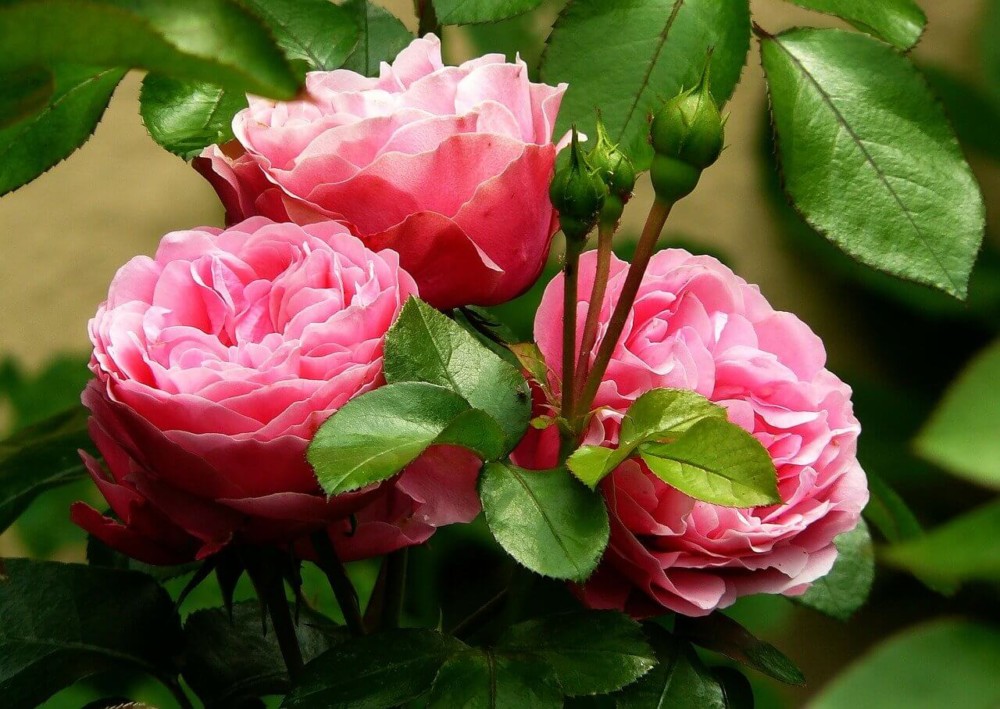
Salvia
Few people are allergic to salvia or sage because these plants don’t emit a lot of pollen. But, their fragrance can sometimes cause those sensitive to smells to suffer. Salvia is enjoyed by many varieties of bees, although not honey bees.
It’s a great bush to plant in your garden and can replace many hayfever inducing bushes.
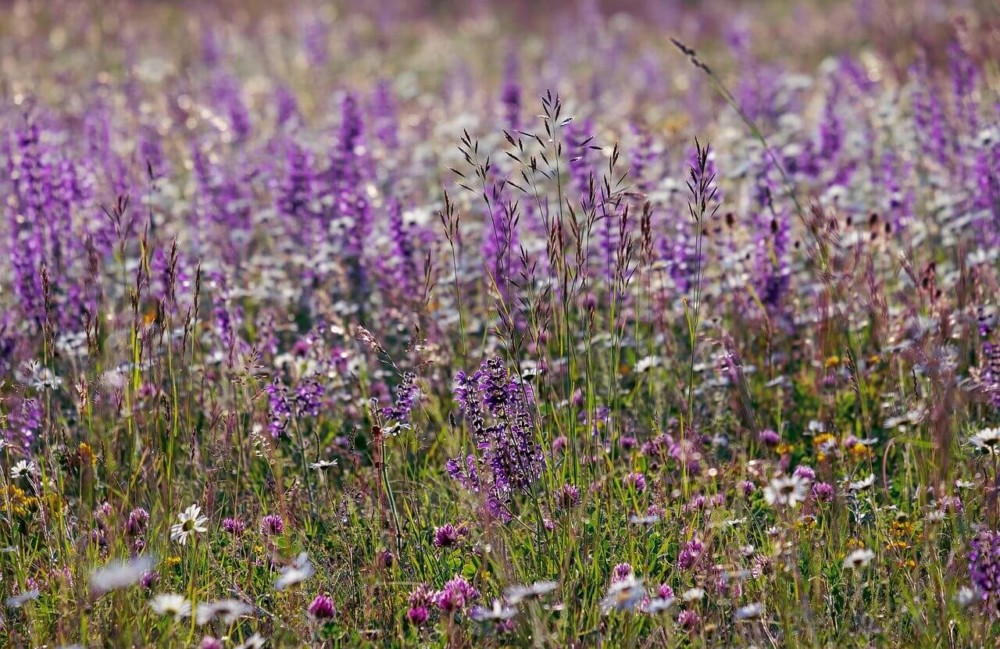
Snapdragons
Snapdragons are an annual flower but are so delicate and beautiful that almost any garden is remiss without it. Snapdragons provide pillard blooms and unique flower shape.
The bright and multi-colored blooms snap closed, keeping the pollen contained. Bees love to crawl inside the lovely flowers to gather pollen and nectar and the isolated pollen won’t affect your allergies, even if you bring some cuttings inside to enjoy!
Just make sure you didn’t bring any unaware bees in as well!
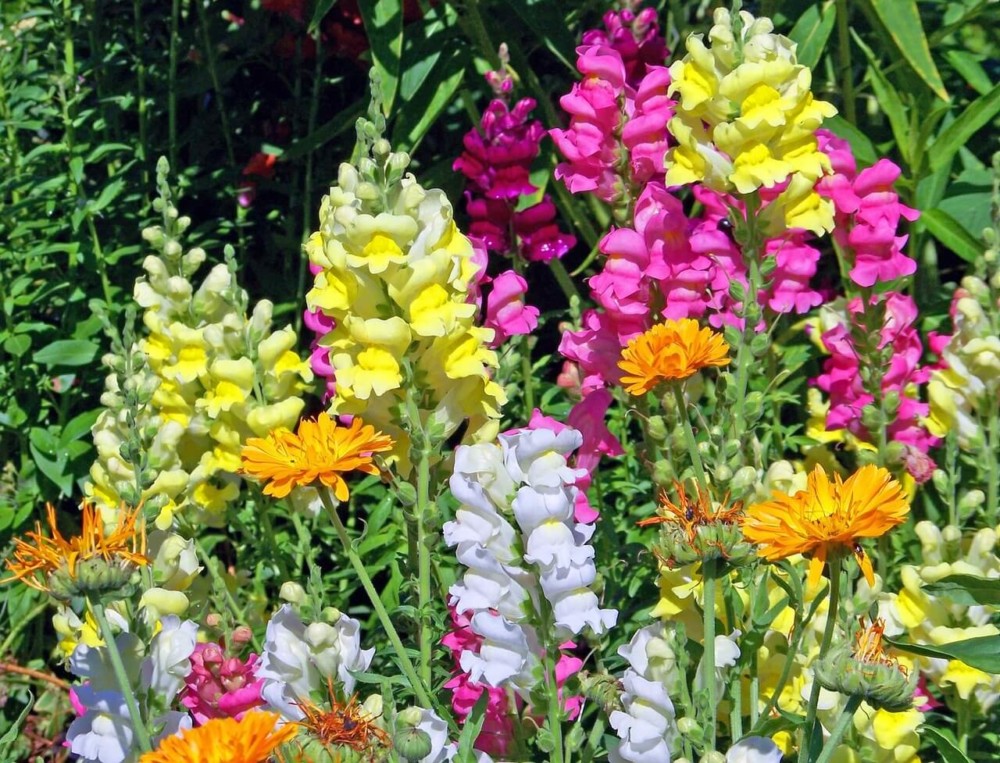
Snowdrops
Snowdrops and their delicate flowers are considered a very allergy-friendly plant. However, if your pet likes too much on garden plants, be careful because it can be poisonous to pets and cause some allergic reactions when eaten.
The small droopy flowers rely on bees to climb inside for pollination and will provide early flowers for hungry bees.

Sweet Pea
The delicate flowers of the sweet pea are lovely but hardy. Sweet pea is edible and provides early spring pollen for bees. There are many varieties of sweet pea to choose from including bushes, vines, and spring, summer, or fall flowering. Sweet pea is an annual plant and grows in the cooler seasons.
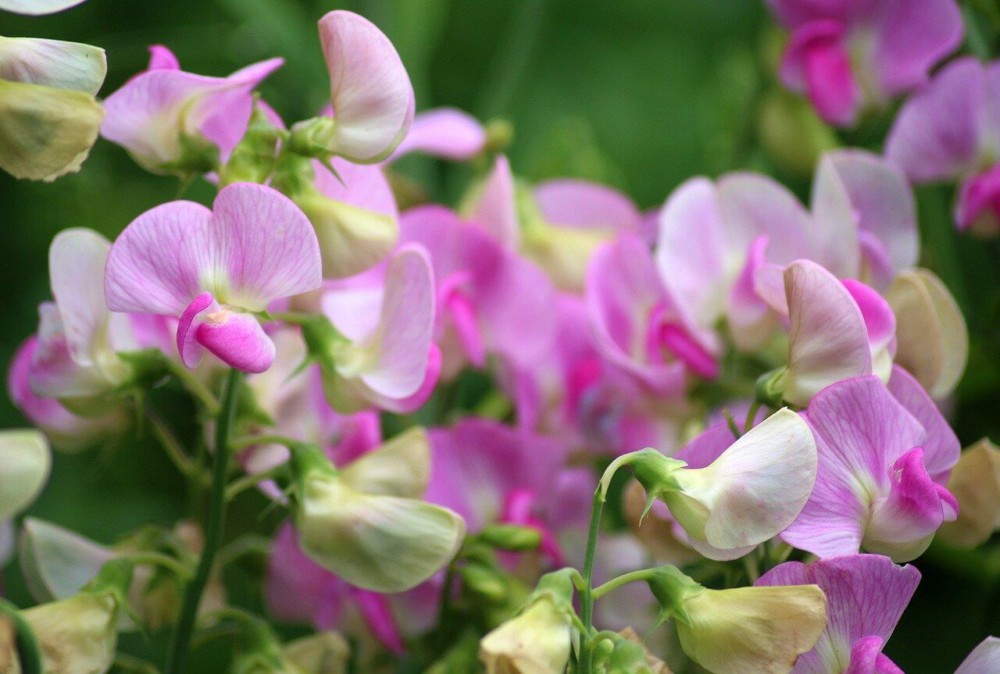
Thrift
Sea thrift is a flowering evergreen that is very allergy-friendly. Thrift doesn’t give off pollen into the air but provides large, colorful flowers that rely on bees to pollinate them.
It’s a perennial so it won’t take much of your time and is easy to grow. Thrift is a great bush that can replace any flowers in the daisy or sunflower family.

Zinnia
Zinnias are a part of the daisy family but are one exception to the allergy-inducing daisies. They come in bright colors and large blooms, but the centers contain less pollen than most other daisies.

Buy Pesticide Free Plants
Many of these plants are available at local nurseries, but be careful to buy ones not already sprayed with pesticides and insecticides. Walmart and other chain nurseries often use pesticides to create beautiful blooms.
But,
Purchasing and cultivating plants with pesticides will kill off bees that are attracted to them and harm the ecosystem.
Conclusion
Not all of these allergy-friendly plants grow in all climates. Make sure that you choose plants that grow in your hardiness zones so that you can enjoy the full beauty and color of these flowers.
In addition to the plants listed above, many other types of flowers are great for an allergy-free garden. Some of them include marigolds, johnny jump-ups, impatiens, bougainvillea, camellia, coleus, hosta, oregano, and many other flowers are allergy-free. Although, these options are less likely to help local bee varieties.
Related Articles
You may also find these articles helpful when creating a bee garden.
Perfect Flowers that Attract Bees: Grow a Bee Garden
The importance of Bees: Foods that Require Bees

